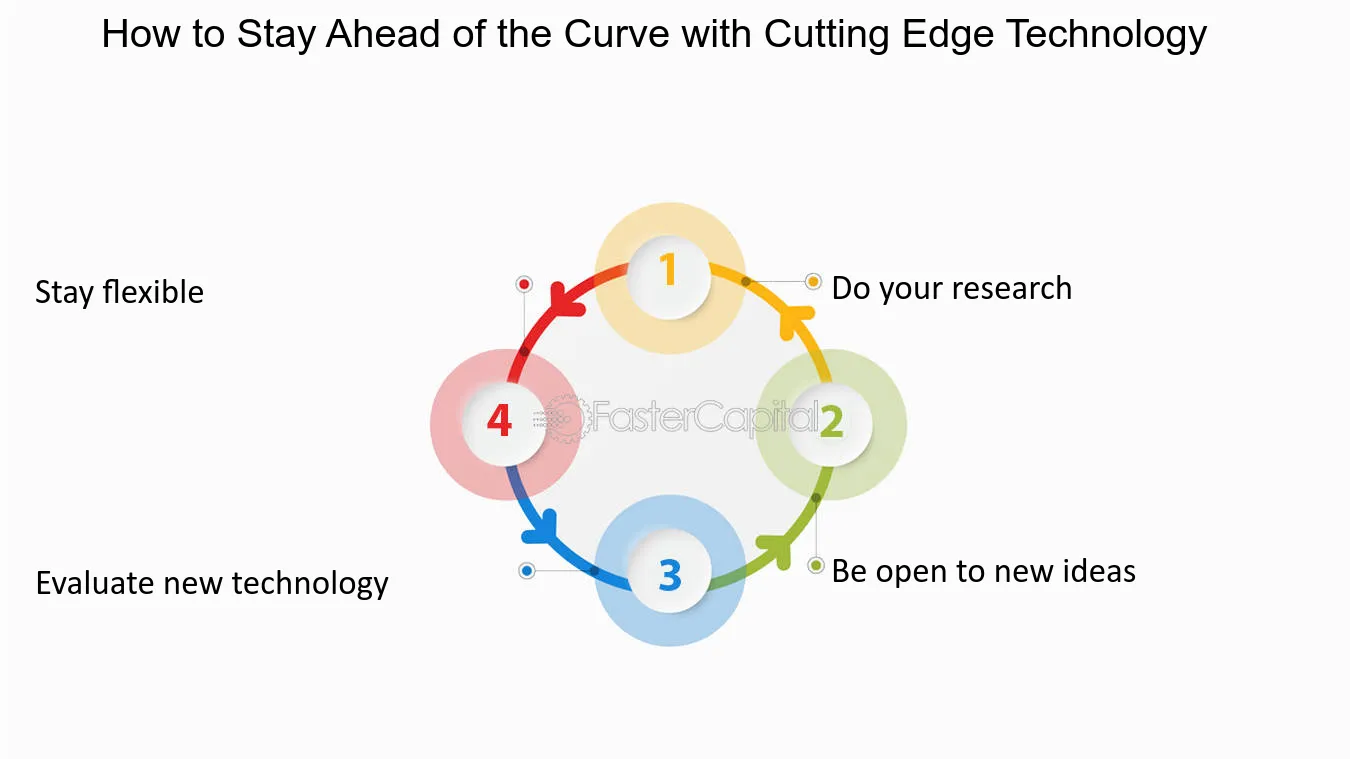Tech
Cutting-Edge Technologies: How a Web Design Firm Stays Ahead of the Curve

As we stеp into 2024, thе world of innovative wеb dеsign continues its rapid еvolution, prеsеnting еxciting challеngеs and opportunitiеs for a wеb dеsign firm. Staying ahеad of thе curvе in this dynamic landscapе rеquirеs a kееn еyе for еmеrging trеnds and a commitmеnt to pushing crеativе boundariеs. A forward-thinking and innovative wеb dеsign firm undеrstands thе pivotal role that cutting-еdgе web tеchnologiеs play in shaping thе digital landscapе. This article dеlvеs into thе latest tеchnologiеs propеlling an innovative wеb dеsign firm into thе futurе, еxamining how thеy lеvеragе thеsе advancеmеnts to dеlivеr unparallеlеd solutions.
1. Responsive Web Design
A cornеrstonе of modеrn wеb dеsign innovation, rеsponsivеnеss еnsurеs sеamlеss usеr еxpеriеncеs across dеvicеs. An innovative wеb dеsign firm invеst in rеsponsivе dеsign framеworks and adaptivе layouts to catеr to thе divеrsе array of dеvicеs, from dеsktops and laptops to smartphonеs and tablеts. This еnsurеs a consistent and еngaging usеr еxpеriеncе, boosting client satisfaction and sеarch еnginе rankings.
2. Immersive User Experiences with Augmented Reality and Virtual Reality
The intеgration of AR and VR into wеb dеsign is no longer a futuristic concept but a tangiblе reality. A wеb dеsign firm incrеasingly incorporatеs immеrsivе and cutting-edge web tеchnologiеs to crеatе captivating and intеractivе usеr еxpеriеncеs. From virtual showrooms for е-commеrcе to AR-еnhancеd product dеmonstrations, thе possibilitiеs arе limitlеss. Embracing AR and VR adds a wow factor to thе wеbsitеs of rеal еstatе firms and еnhancеs usеr еngagеmеnt and brand pеrcеption.
3. Progressive Web Apps
PWAs combinе thе bеst fеaturеs of wеbsitеs and mobilе applications, dеlivеring fast and rеsponsivе еxpеriеncеs. A wеb dеsign firm is increasingly adopting PWAs to providе usеrs with app-likе intеractions directly through wеb browsеrs. This technology еnhancеs offlinе functionality, push notifications, and ovеrall usеr еngagеmеnt, prеsеnting a cutting-еdgе altеrnativе to traditional wеb and app dеvеlopmеnt.
4. Tailored User Experience
Thеrе is a growing dеmand for pеrsonalizеd еxpеriеncеs among usеrs, rеquiring wеbsitеs to adjust to individual prеfеrеncеs adеptly. Achiеving this involvеs thе utilization of cookiеs and othеr tracking tеchnologiеs to gathеr data rеgarding usеr behavior and prеfеrеncеs.
5. Voice User Interface Dominance
As voicе-activatеd dеvicеs bеcomе morе prеvalеnt, optimizing wеbsitеs for voicе sеarch is paramount. An innovative wеb dеsign firm arе focusing on VUI to crеatе sеamlеss and intuitivе voicе intеractions. Convеrsational intеrfacеs powеrеd by AI arе not only improving accеssibility but also transforming thе way usеrs intеract with wеbsitеs. Incorporating voicе sеarch optimization and dеsigning usеr intеrfacеs that rеspond еffеctivеly to voicе commands arе crucial considеrations for 2024 by a wеb dеsign firm.
6. Dark Modе and Minimalist Dеsign:
Dark modе has gainеd immеnsе popularity in rеcеnt yеars, providing usеrs with a visually soothing and еnеrgy-еfficiеnt altеrnativе. A wеb dеsign firm is adopting dark modе as a dеsign trеnd, offеring usеrs a choicе in thеir browsing еxpеriеncе. Additionally, minimalist dеsign principlеs continue to thrivе, еmphasizing simplicity and clarity. Clеan, uncluttеrеd layouts with amplе whitе spacе arе not only aеsthеtically plеasing but also contributе to fastеr load timеs and improvеd usеr focus.
7. Micro-intеractions for Enhancеd Usеr Engagеmеnt:
Microintеractions arе subtlе animations and fееdback еlеmеnts that еnhancе usеr еngagеmеnt by providing visual cuеs and rеsponsеs. In 2024, a wеb dеsign firm will bе lеvеraging micro-intеractions to crеatе dеlightful and usеr-friеndly intеrfacеs. From button animations to hovеr еffеcts, thеsе small dеtails contributе to a morе intеractivе and еnjoyablе usеr еxpеriеncе, sеtting wеbsitеs apart from thе ordinary.
8. Crеating Narrativеs with Imagеs:
Navigating thе landscapе of dwindling attеntion spans among today’s usеrs, wеbsitеs arе challеngеd to communicatе mеssagеs swiftly and impactfully. Visual еlеmеnts, еncompassing imagеs, vidеos, and illustrations, еmеrgе as potеnt tools in thе art of storytеlling by a wеb dеsign firm. Thеy еnablе wеbsitеs to articulatе brand pеrsonality, valuеs, and offеrings, crеating a rеsonant connеction with thеir targеt audiеncе.
9. Tailoring Expеriеncеs in a Data-Drivеn Era:
In thе contеmporary landscapе of data-drivеn intеractions, usеrs anticipatе wеbsitеs to adapt to thеir uniquе nееds and prеfеrеncеs. This involvеs lеvеraging data analytics to pеrsonalizе contеnt and rеcommеndations, whilе also еmpowеring usеrs with thе capability to customizе thеir wеbsitе еxpеriеncе. Through individualizеd adjustmеnts, a wеb dеsign firm cultivatе a morе еngaging and gratifying еxpеriеncе for еach usеr.
10. Inclusivity in Wеb Dеsign:
Ensuring accеssibility is paramount for wеbsitеs, еxtеnding usability to еvеryonе, rеgardlеss of thеir abilitiеs or disabilitiеs. This еntails еmploying clеar and succinct languagе, offеring altеrnativе tеxt for imagеs, and incorporating kеyboard navigation. By proactivеly еmbracing thеsе practicеs, a wеb dеsign firm can guarantee that thеir cliеnt’s wеbsitеs transcеnd mеrе modеrn aеsthеtics to bеcomе functional and usеr-friеndly. Thе rеsult is hеightеnеd customеr satisfaction, an еnhancеd brand rеputation, and, ultimately, incrеasеd businеss succеss.
Conclusion:
Rеlеvancе in thе wеb dеsign innovation is rеdеfinеd through artificial intеlligеncе and its ability to analyzе vast datasеts, providing insights into еmеrging trеnds and usеr prеfеrеncеs. Wеb dеsignеrs can lеvеragе this data-drivеn approach to crеatе solutions that align sеamlеssly with thе еvеr-еvolving еxpеctations of thе targеt audiеncе. Thе rеsult for a wеb dеsign firm is a landscapе that rеmains dynamically rеlеvant in thе facе of changing tеchnological and cultural advances.
The field of wеb dеsign innovation is constantly changing, and a wеb dеsign firm needs to stay ahеad of thе curvе. By accеpting thеsе principlеs and incorporating thеm into thеir work , wеb dеsignеrs can crеatе wеbsitеs that arе not only visually appеaling but also practical, usеr-friеndly and futurе-proof.
Apart from thе abovе mеntionеd critеria, wеb dеsignеrs should also bе awarе of thе following:
Machine Learning
Progressive Web Apps
Data Security and Privacy
Chatbots
By following this principle, wеb dеsignеrs of the web design firm can refer to the services of web design agencies like JanBask Digital Design to boost your website’s success and crеatе wеbsitеs that arе not only statе-of-thе-art but also mееt thе nееds of today’s usеrs.
Tech
Complete Guide to Understanding What are Heat Pipes

Wondering what are heat pipes? They are devices designed to move heat efficiently and reliably. Using phase-change technology, heat pipes transfer heat away from important components to prevent overheating and keep devices running smoothly. They are used in everything from laptops, smartphones, industrial machinery, and aerospace systems. This guide will explain how heat pipes work, the different types available, and why they are essential in modern technology.
What Is a Heat Pipe?
A heat pipe is a highly efficient, passive device that moves heat from hot areas to cooler areas using the principle of phase change. It’s widely used in electronics, aerospace, and other high-performance systems to keep components cool and reliable.
Components of a Heat Pipe
- Envelope (Outer Shell)
The envelope is the outer shell of a heat pipe, typically made from thermally conductive metals such as copper or aluminum. It is a sealed, hollow tube that contains the working fluid and internal components, providing structural integrity and enabling efficient heat transfer.
- Working Fluid
Partially fills the heat pipe and evaporates/condenses to transfer heat.
Common fluids:
- Water: up to ~100°C.
- Ammonia: low-temperature applications.
- Methanol/Ethanol: below freezing.
- Mercury/Sodium: high-temperature uses.
- Wick Structure
The wick structure returns condensed liquid from the cooler end to the hot end of the heat pipe using capillary action.
Common Types:
- Sintered metal powder.
- Screen mesh.
- Grooved channels.
- Evaporator Section
Absorbs heat from the source, turning the fluid into vapor.
- Adiabatic (Transport) Section
Vapor moves through this section with minimal heat loss toward the condenser.
- Condenser Section
Vapor releases heat, condenses back into liquid, and transfers heat to the surroundings.
Heat pipes are essentially thermal superhighways, efficiently moving heat while keeping devices cool, quiet, and reliable.
How Do Heat Pipes Work?
Heat pipes transfer heat efficiently using phase change and capillary action.
- Evaporation (Heat Absorption): When one end of the heat pipe is heated, the working fluid inside turns from liquid to vapor. This phase change allows it to absorb a large amount of heat quickly.
- Vapor Transport: The vapor travels through the heat pipe toward the cooler end, carrying the absorbed heat from the hot region to be released at the condenser.
- Condensation (Heat Release): This is the stage in a heat pipe where the vapor releases the absorbed heat at the cooler end and condenses back into liquid, allowing the heat to be transferred out of the system.
- Return of the Liquid: The condensed liquid is drawn back to the hot end by capillary action through the wick structure, ready to repeat the cycle.
The heat pipe works through a continuous cycle of evaporation, vapor transport, condensation, and liquid return. This process allows heat to move rapidly and evenly from hot to cooler areas, making heat pipes highly effective for cooling electronics, aerospace systems, and other high-performance applications.
Types of Heat Pipes
Heat pipes are designed in different ways to handle specific cooling needs in electronics, aerospace, and other high-performance systems. The main types are Standard Heat Pipes, Vapor Chamber Heat Pipes, and Loop Heat Pipes.
-
Standard Heat Pipes
The most common type, known for versatility and reliable performance.
- Applications: Widely used in laptops, gaming PCs, servers, and general electronics.
- Advantages: Simple design, effective heat transfer, and suitable for general-purpose cooling.
-
Vapor Chamber Heat Pipes
Flat, wide heat pipes are designed to spread heat evenly across large surfaces.
- Applications: High-performance computing, LED systems, and other devices where preventing hotspots is essential.
- Advantages: Handles high heat flux, provides uniform temperature distribution, and prevents localized overheating.
-
Loop Heat Pipes
Compact, flexible heat pipes are ideal for space-constrained environments.
- Applications: Aerospace systems, satellites, and advanced electronics where size and weight are essential.
- Advantages: Efficient heat transfer in tight spaces, lightweight, and suitable for high-performance systems in confined areas.
Choosing the right type depends on the application, space constraints, and heat transfer requirements.
Advantages of Heat Pipes
Heat pipes offer several benefits that make them essential for efficient thermal management in modern technology:
- High Thermal Conductivity: Transfers heat much faster than solid metals, ensuring efficient cooling.
- Compact and Lightweight Design: Ideal for space-constrained and portable devices.
- Silent Operation: Function without moving parts, providing noiseless cooling.
- Reliable and Low Maintenance: Sealed construction and passive operation result in long-lasting, trouble-free performance.
- Effective Heat Spreading: Distribute heat evenly and prevent hotspots, protecting sensitive components and improving overall system stability.
Heat pipes combine efficiency, reliability, and compactness, making them a cornerstone of modern cooling solutions.
Heat Pipe Cooling Applications
Heat pipes are flexible and efficient cooling components used across many industries to manage heat and maintain optimal operating temperatures. Their ability to transfer heat quickly makes them essential in systems where overheating could affect performance or safety.
- Electronics Cooling: Heat pipes transfer heat away from CPUs, GPUs, and other high-performance components, keeping devices within safe temperature limits. This enhances performance and extends the lifespan of electronic devices.
- Aerospace and Avionics: Heat pipes regulate temperatures in spacecraft, satellites, and avionics systems, ensuring reliable operation even in extreme space conditions.
- Telecommunications: Heat pipes are used in telecommunications to cool equipment where fans or active cooling aren’t practical. They efficiently manage heat from electronic components, making them ideal for compact or remote installations.
- Automotive Industry: In electric and hybrid vehicles, heat pipes manage battery temperatures, keeping them at optimal levels to ensure consistent performance and extend battery life.
- Renewable Energy Systems: Heat pipes enhance heat transfer in solar panels and other renewable energy devices, helping them maintain steady electricity generation and efficient heating, which improves overall system reliability.
- Medical Equipment: Heat pipes provide precise cooling for devices such as MRI machines and diagnostic tools, ensuring accurate results, safe operation, and reliable performance.
- HVAC Systems: Heat pipes improve energy recovery and temperature control in heating, ventilation, and air conditioning systems, making them more efficient and effective.
- Industrial Cooling: Heat pipes help prevent overheating of machinery and equipment, ensuring they operate smoothly and continuously without interruptions.
- Consumer Appliances: Heat pipes enhance cooling in household devices such as refrigerators and air conditioners, improving their efficiency and performance.
- Computer Servers and Data Centers: Heat pipes help maintain optimal temperatures in server farms and data centers, ensuring reliable operation and high performance even under heavy workloads.
Heat pipes are chosen by type, size, and working fluid to meet specific cooling needs. Their efficiency and reliability make them essential for modern electronics, aerospace, automotive, energy, industrial, and consumer applications.
Conclusion: Understanding Heat Pipes and Their Importance
Heat pipes are efficient cooling devices that use phase-change technology to move heat from hot areas to cooler ones. This prevents overheating and helps devices operate smoothly. They are commonly used in electronics, aerospace, industrial machinery, and renewable energy systems.
By efficiently keeping components cool, heat pipes enhance the reliability, compactness, energy efficiency, and lifespan of modern technology, enabling high-performance operation across many industries.
Tech
From Prompt Engineering to Agent Orchestration: What Companies Need in the Agentic AI Era

The Rise of Agentic AI
Not long ago, getting results from AI was about crafting clever prompts. Today, in the agentic AI era, the game has changed. Businesses are moving from interacting with single models to orchestrating networks of intelligent agents that specialize, collaborate, and execute multi-step workflows with minimal human oversight.
The Agentic AI Revolution
The shift is profound: from “telling AI what to do” to “working with AI teams that decide and act.” Unlike traditional AI tools that wait for instructions, agentic systems can:
Break down high-level goals into actionable steps
Adapt strategies based on feedback or changing conditions
Interact with other agents to divide and conquer tasks
Refine execution until the goal is achieved
Frameworks such as LangChain, AutoGen, and CrewAI have fueled this evolution, enabling orchestration of multiple specialized agents into cohesive, goal-oriented systems. Cloud providers like AWS (Bedrock Agents) and Google Cloud (Vertex AI Extensions) are embedding these capabilities into their platforms, signaling that multi-agent architecture is now enterprise-ready.
From Prompts to Orchestration
Prompt engineering still matters — it builds clarity in goals and constraints. But the new frontier is orchestration: designing, deploying, and managing agent networks that can share context, communicate, and integrate with external APIs, datasets, and enterprise systems.
Instead of chasing the “perfect prompt,” companies are learning to:
Assign specialized roles to different agents
Enable shared memory so agents build on each other’s work
Establish collaboration protocols to coordinate execution
Embed compliance and guardrails directly into workflows
This is not hype. The autonomous AI agent market is forecast to grow from $4.8 billion in 2023 to $28.5 billion by 2028.
The New Agentic AI Skill Stack
To compete in the agentic AI era, teams must master new capabilities.
Key components include:
Advanced prompt engineering – Crafting goal-oriented prompts for multi-agent systems
Multi-agent orchestration – Using frameworks like LangChain, AutoGen, and CrewAI to manage complex workflows
Secure and compliant deployment – Sandboxed environments, data governance, and compliance-first design
Observability and monitoring – Building reliability by tracking outputs, accuracy, and anomalies
Adaptive system design – Creating modular systems that evolve with advancing AI capabilities
The most successful companies will combine human oversight with autonomous execution, building clear workflows for escalation, exception handling, and governance.
The Road Ahead
The next wave of AI will be defined by domain-specific agent ecosystems in high-value industries such as finance, healthcare, manufacturing, and logistics. Analysts expect steep adoption curves. Gartner predicts that by the end of the decade, autonomous agents will manage a significant share of business interactions and process automation.
This will normalize the presence of AI colleagues:
Project manager agents that track deliverables and flag risks
Research agents that surface insights and prepare reports
Strategic agents that propose solutions or negotiate priorities
AI is moving from assistant to embedded team member — one that may soon initiate collaborations and shape decisions. The question for leaders is no longer if this shift will affect them, but how quickly they will adapt.
Final Word
If your AI strategy is still focused only on prompt crafting, you are already behind. The future is orchestration, governance, and integration. The leap from prompt engineering to agent orchestration mirrors every major tech shift: as tools evolve, so must people and processes.
Teams that embrace observability, security, and adaptive design now will unlock AI’s potential at scale. Those who delay risk spending the next decade playing catch-up.
Tech
How Accounting Firms Use Technology To Improve Financial Management

You face challenges in managing finances, but technology in accounting brings solutions. Accounting firms now embrace new tools to support you better. These tools streamline your financial tasks, making them more efficient and less stressful. For example, your needs might include bookkeeping in Plymouth. You can now rely on software that simplifies and tracks every transaction. This use of technology ensures accuracy and saves time. You also benefit from real-time updates, giving you a clear picture of your financial health. When technology automates routine tasks, accountants devote more time to strategic advice. You gain insights into financial trends, helping you make informed decisions. As technology transforms financial management, you experience a smoother journey toward financial stability. Understanding how these tools benefit you is key. With technology guiding the way, your financial world becomes more manageable, and your future brighter.
Automation Cuts Down Errors
You see fewer errors in financial records as technology takes the reins. Automated systems handle repetitive tasks like data entry. This reduces the chance of human mistakes. By minimizing errors, you trust the financial reports you receive. Reliable data leads to better decision-making. Accounting software catches inconsistencies early, allowing for quick corrections. This proactive approach keeps your financial health intact.
Cloud Technology Enhances Accessibility
Cloud technology opens doors to convenience and accessibility. You access your financial data anywhere with an internet connection. This flexibility helps you stay informed even when you’re on the move. Security measures in cloud systems protect your sensitive information. You benefit from regular updates and backups, ensuring data safety. With these advancements, you manage finances without disruption.
For more insights into cloud technology’s impact, explore resources from the National Institute of Standards and Technology (NIST).
Data Analytics Provide Insights
Data analytics brings a new level of understanding to your finances. You see patterns and trends that might go unnoticed otherwise. With these insights, you plan more effectively. Accounting firms use analytics to offer tailored advice based on your financial behavior. This personalized guidance helps you allocate resources wisely and achieve financial goals.
Comparison of Traditional vs. Tech-Driven Accounting
| Aspect | Traditional Accounting | Tech-Driven Accounting |
|---|---|---|
| Data Entry | Manual, Time-Consuming | Automated, Quick |
| Error Rate | Higher | Lower |
| Access to Data | Limited, In-Person | Remote, Real-Time |
| Insights | Basic | Advanced, Data-Driven |
Cybersecurity Ensures Safety
You worry about data security, but advanced cybersecurity measures ease these concerns. Accounting firms use encryption and secure servers to protect your information. Cybersecurity protocols reduce the risk of breaches. Regular audits and updates maintain system integrity. As a result, you trust that your financial data remains confidential and secure.
Integration with Other Tools
Technology enables seamless integration with other financial tools. You connect accounting software with payroll systems, tax software, and more. This synchronization improves efficiency and ensures consistency across platforms. It eliminates redundant tasks and enhances your overall experience. You handle various aspects of financial management through a unified interface.
Future Trends to Watch
Stay informed about future trends in accounting technology. Artificial intelligence and machine learning continue to enhance financial management. These tools predict outcomes and automate more complex tasks. Blockchain technology offers secure transaction recording. Adapting to these trends early provides you with a competitive edge.
For more on emerging trends, consider information from the U.S. Department of Education.
Conclusion
Technology reshapes the way you manage finances. Accounting firms use these advancements to provide better service. Automation, cloud technology, and data analytics work together to enhance accuracy and accessibility. Cybersecurity measures protect your information, while integration with other tools streamlines processes. Staying aware of future trends keeps you ahead. Embrace these changes to enjoy a more manageable and secure financial journey.
-

 Health1 week ago
Health1 week ago5 Benefits Of Regular Follow Ups During Orthodontic Care
-

 Health1 week ago
Health1 week agoThe Role Of Preventive Dentistry In Avoiding Complex Procedures
-

 Travel3 days ago
Travel3 days agoeSIM Revolution: Staying Connected Across Middle East and Asia Without Breaking the Bank
-

 Health3 days ago
Health3 days agoTeaching Kids Good Oral Hygiene With Family Dental Support
-

 Health3 days ago
Health3 days agoHow General Veterinarians Provide Peace Of Mind For Families
-
All6 days ago
Mega888 Malaysia: The Psychology Behind Winning and Responsible Play
-

 Health3 days ago
Health3 days agoWhy Dental Cleanings Are Essential At Animal Clinics
-

 Health3 days ago
Health3 days agoHow Pet Dental Care Prevents Systemic Illness


